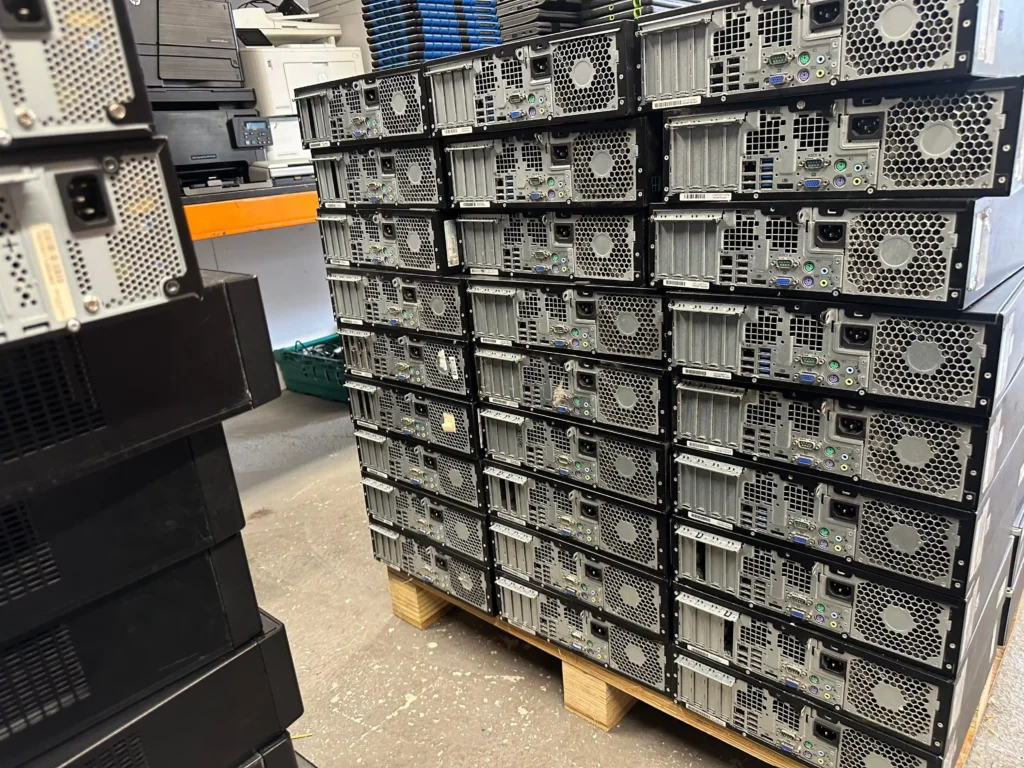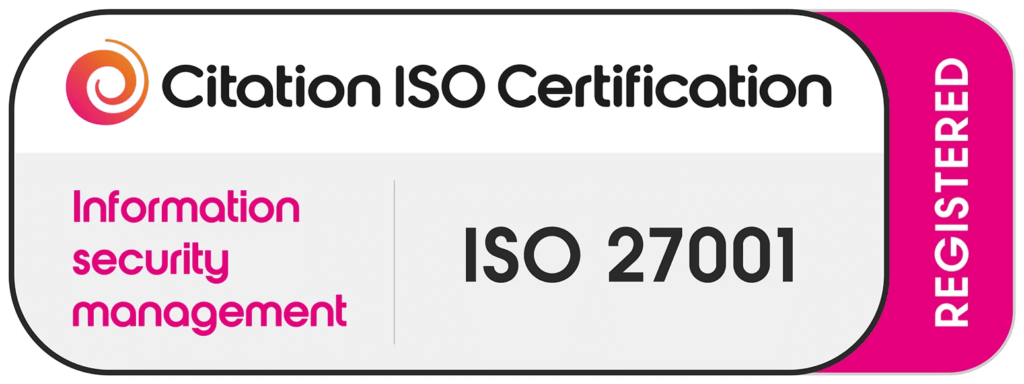Recycle your commercial desktop computer IT hardware is inevitable, especially in businesses. When it comes time to dispose of aging desktops, you have two choices: toss them into a landfill or take a smarter route. By choosing to recycle commercial desktop computers, businesses reduce their carbon footprint and embrace sustainability. This eco‑friendly computer disposal guide will walk you through certified, secure, and responsible methods to handle old equipment.
Why You Should Recycle Commercial Desktops Responsibly
Commercial IT hardware contains valuable and hazardous materials. Electronic waste disposal done irresponsibly can pollute soil, air, and water with toxic chemicals like lead and mercury. Proper business computer recycling ensures:
- Reduced the environmental impact of e‑waste
- Recovery of precious metals and reusable components
- Compliance with data protection laws and e‑waste regulations
According to recent studies, sustainable IT disposal methods can also improve a company’s public image and appeal to eco-conscious consumers. Now, let’s explore 7 actionable strategies for smart recycling.
Method 1: Donate or Reuse Business Computers Locally
Benefits of Donating Hardware
Donating desktops can support nonprofits, schools, or underfunded institutions. By choosing to donate used business computers, you contribute to digital equity while keeping devices out of landfills.
Where to Find Non-Profits or Schools Accepting Used Desktops
- Local educational foundations
- NGOs supporting underserved communities
- Tech refurbishing organizations like Computers with Causes or World Computer Exchange
- Look up “electronics recycling near me” to find local donation centers
Method 2: Sell or Trade-In Your Commercial Desktop
Platforms for Resale and Trade-In Programs
Many platforms now offer free computer recycling pickup or trade-in value:
- Dell Asset Recovery Services
- HP Trade-In Program
- Amazon and Best Buy recycling programs
These options help recover part of your investment while extending the desktop’s lifecycle.
Extended Lifespan & ROI Benefits
By participating in resale or trade-in schemes, businesses not only recoup value but also reduce overall hardware procurement costs. It’s a win-win for commercial IT asset recycling.
Method 3: Use Certified E‑Waste Recycling Services
What R2 or e‑Stewards Certification Means
Using certified e-waste recyclers ensures responsible handling and disposal. Look for:
- R2 Certified Recyclers
- e-Stewards Certified Computer Recycling
These certifications guarantee environmentally sound practices and data safety.
How to Locate Compliant Recyclers Near Your Business
Search “certified e‑waste recycling in London” or “secure business computer recycling services near me” to find trusted local providers.
Method 4: Separate and Salvage Valuable Components
Recovering HDDs, SSDs, RAM, CPUs, GPUs
Before sending desktops off for disposal, recover valuable components. Hard drives, RAM, and GPUs can be reused or sold. This step enhances sustainable IT disposal methods.
Proper Handling and Wiping for Data Security
Use tools like DBAN or Blancco for secure data destruction. Also, keep a data destruction certificate for compliance purposes.
Method 5: Recycle Electronics Through Manufacturer Take‑Back
Program Details from Dell, HP, Lenovo, etc.
Leading brands offer manufacturer computer take-back programs. For instance:
- Dell Reconnect (in partnership with Goodwill)
- HP Planet Partners
- Lenovo’s Asset Recovery Services
Free vs. Fee-Based Take-Back Policies
Some manufacturers offer free take-back for bulk devices, while others may charge based on device condition or age. Always verify before enrolling.
Method 6: Implement Asset Remarketing for Large Fleets
How Asset Remarketing Services Work for Companies
Asset remarketing services evaluate, refurbish, and resell IT hardware, maximizing its value. Companies like Sims Recycling or Iron Mountain offer end-to-end solutions.
Minimizing Waste and Environmental Impact
This strategy reduces e‑waste and improves lifecycle management. Pairing it with secure data erasure for commercial PCs ensures data protection and ROI.
Method 7: Repurpose Desktops for Internal Use or Upcycles
Upgrading and Redeploying Within Your Organization
Old desktops can be upgraded with SSDs and used as backup systems or training terminals. This approach suits cost-conscious and eco-friendly computer disposal strategies.
Creative Reuse Ideas (Server, Kiosk, Educational Setups)
Transform old desktops into:
- File servers
- Workstations for interns
- Kiosks or time-tracking terminals
This way, you avoid waste and reduce procurement costs.
How to Create a Company Recycling Policy for Computers
Drafting Policy Language, Data Security Checklist
Include mandatory procedures for:
- Device wiping
- Choosing certified e‑waste recyclers
- Regular disposal schedules
Training Staff and Tracking Disposal vs. Reuse
Use asset tracking software to monitor device status and recycling stages. Ensure your team is trained in secure data destruction for businesses and recycling protocols.
Environmental & Legal Considerations When Recycling
Hazardous Materials and Proper E‑Waste Disposal Regulations
IT assets contain harmful chemicals. Failure to follow e-waste recycling laws could result in penalties and public scrutiny.
Local Laws and Data Protection Regulations (GDPR, HIPAA, etc.)
Your recycling strategy must adhere to:
- GDPR in the EU
- HIPAA in the U.S. (for healthcare businesses)
- Local IT asset disposition service London standards
Measuring Impact: Cost Savings, Sustainability Metrics & Carbon Footprint
Quantifying Business Value and Eco-Benefits
Track metrics such as
- Number of devices recycled
- Cost recovered through resale or donation
- Reduction in the electronic waste generated
Reporting Metrics to Stakeholders and Customers
Use these metrics in CSR reports to showcase your commitment to responsible electronics disposal and sustainability.
Best Practices & Tips for Secure Data Erasure Before Recycling
Software Tools and Physical Destruction Options
Ensure secure data erasure for commercial PCs using:
- Blancco Drive Eraser
- DBAN
- Physical destruction (degaussing, shredding)
Documentation and Certification of Data Destruction
Always request and file:
- Certificate of data destruction
- Chain-of-custody logs
These are essential for audits and compliance.
Conclusion: Choosing the Best Recycling Method for Your Business
Recycling desktops is not just about getting rid of old gear, it’s about making responsible, secure, and eco-conscious decisions. From donating used computers to using IT asset disposition services, each method serves a different business need. Choose the strategy that aligns with your budget, security requirements, and environmental goals.
FAQs About Commercial Desktop Recycling (Eco‑Friendly Guide)
1. What is the best way to recycle a business desktop?
Use certified e-waste recyclers or manufacturer take-back programs to ensure secure and eco-friendly disposal.
2. Can I donate my old business computers?
Yes. Many nonprofits accept used desktops, especially educational institutions.
3. What happens if I don’t wipe the data before recycling?
Failing to perform secure data destruction can lead to data breaches and compliance violations.
4. Are there any free recycling options for commercial desktops?
Yes. Some local governments and manufacturers offer free computer recycling pickup or drop-off programs.
5. How do I ensure my company complies with data laws when recycling?
Create a policy that includes data erasure standards and work with R2-certified recyclers.
6. Can I repurpose my old desktops internally?
Absolutely. Many businesses refurbish and reuse desktops for internal training or non-critical tasks.


